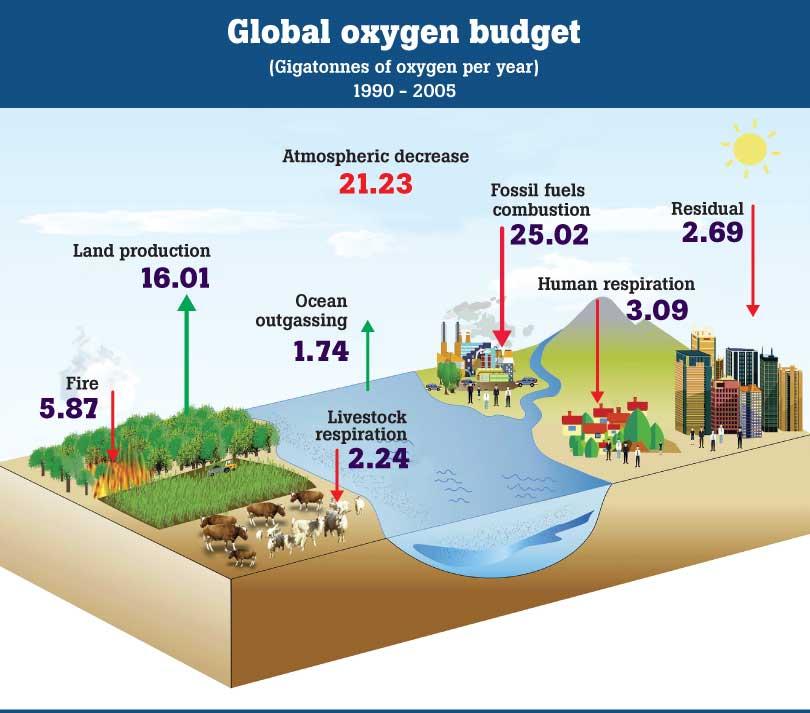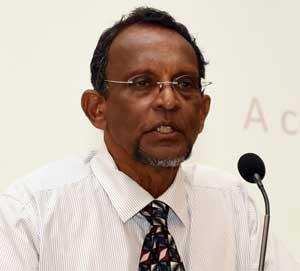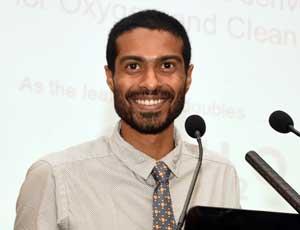Reply To:
Name - Reply Comment

 Greta Thunberg became a global sensation in no time. If a 16-year-old could go round the world, doing what she could in her capacity to voice out for climate change, there’s much more that the rest of global citizens could do. The most suitable remedy to counter global warming is planting trees. But at EarthRestoration, it is not about planting any tree. While photosynthesis is the basic reaction that produces oxygen and keeps all of us alive, they believe that by planting trees that contribute to this process, the one way equation of producing carbon dioxide by burning fossil fuels could be reversed and restored. Headed by Dr. Ranil Senanayake, a conservation specialist, EarthRestoration attempts to introduce the concept of bio-currency, where people can invest in planting specific units of trees while a rural farmer would benefit on the other end. At a recently concluded event, Dr. Senanayake and his team explained how people could get involved in this quest to restore the global climate crisis.
Greta Thunberg became a global sensation in no time. If a 16-year-old could go round the world, doing what she could in her capacity to voice out for climate change, there’s much more that the rest of global citizens could do. The most suitable remedy to counter global warming is planting trees. But at EarthRestoration, it is not about planting any tree. While photosynthesis is the basic reaction that produces oxygen and keeps all of us alive, they believe that by planting trees that contribute to this process, the one way equation of producing carbon dioxide by burning fossil fuels could be reversed and restored. Headed by Dr. Ranil Senanayake, a conservation specialist, EarthRestoration attempts to introduce the concept of bio-currency, where people can invest in planting specific units of trees while a rural farmer would benefit on the other end. At a recently concluded event, Dr. Senanayake and his team explained how people could get involved in this quest to restore the global climate crisis.
 According to Dr. Senanayake, the Earth is an ecosystem and it consists of communities of interacting species and the physical environment which they live in. “But today, it is being negatively impacted by actions of humanity. Ecosystem Earth has now begun to show increasing signs of stress including loss of biodiversity, environmental degradation and conflict of resources among dominant species which are typical signs of an external force against our life support system to a system change. System change is when a biological system nears a state change and it could range from the collapse of a dominant species - which is us in this case to the development of alternate biological communities to the collapse of an entire system. So we must act now.”
According to Dr. Senanayake, the Earth is an ecosystem and it consists of communities of interacting species and the physical environment which they live in. “But today, it is being negatively impacted by actions of humanity. Ecosystem Earth has now begun to show increasing signs of stress including loss of biodiversity, environmental degradation and conflict of resources among dominant species which are typical signs of an external force against our life support system to a system change. System change is when a biological system nears a state change and it could range from the collapse of a dominant species - which is us in this case to the development of alternate biological communities to the collapse of an entire system. So we must act now.”
“Carbon dioxide (CO2 ) is the driver of the current climate crisis,” he continued. “If you consider the natural world, volcanic activity, both on land as well as under the sea would emit 200 million tonnes of CO2 annually into the atmosphere. But it doesn’t build up because if that happens none of us would exist. This is because nature has learnt how to take it out of the atmosphere, fossilize it and lock it up so that the atmosphere gets only a limited amount. But we are reversing the cycle. We are going down to take the fossilized CO2 that has been locked up and burn it to get energy. Throughout history up until today the CO2 concentration has been below 300 ppm and today it has shot up and is going up constantly despite all assurances given to us. As a consequence, global temperatures are on the rise. The danger is that everything we depend on, which is the chlorophyll in our plants is an enzyme which operates on an optimum temperature which is set at 370C. If it exceeds 49-50% of plants will die and there’ll be no more food. If it goes beyond that human beings will not be able to live. This is the danger. We are told that we can be carbon neutral by planting a tree but that doesn’t make sense. When you burn fossil fuels in the atmosphere - carbon dioxide and water vapor gives new carbon dioxide and new water vapor. Something that hasn’t been discussed is that the water vapor that’s released from burning fossil fuels also make a huge problem. As the water vapor condenses and become water it turns to heat. If you look at the energy equivalent of the water vapor produced by burning fossil fuels it is similar to two or three large nuclear devices going off in our atmosphere. On the other hand, what we use to burn it is biologically derived oxygen.”
“Why should we be concerned about oxygen?” he questioned. “Because we need it to breathe. Every time we get into a car, it’s like 42,000 people breathing every minute but we don’t put any of it back. The current crisis not only shows we are increasing CO2 levels but we are decreasing oxygen levels as well. Photosynthetic Biomass (PB) is the way to produce oxygen. CO2 and water use sunlight to produce sugars and oxygen. The question is how to improve oxygen that will be produced. PB also applies to the sea. 70% of the oxygen we breathe today is made in the ocean. As oceanic production goes down things will get critical. Oxygen could be replaced by plants by means of increasing forest cover, protecting oceans or by investing in the increasing of PB. If there’s a value in it we can get people interested in it. The leaf is the only thing that produce oxygen as long as it’s living. For example if we take a breadfruit plant, so far we have only placed an economic value to the fruit. But under the economy we are proposing, the leaf also has value as it produce oxygen as long as it carries out its activity of photosynthesis. We are proposing an economy based on life. We have done research to advance this and we now know the growth curves of the trees. We know how much oxygen they produce and water they clean over time and have gotten data for over 24 species. This allows us to be scientifically accurate. When we do that we look at calculating Primary Ecosystem Services (PES) and everything else that follows is a consequence. The economist has shown us that is the resource we can use to change the planet. What we are suggesting is that investing in photosynthetic biomass on primary ecosystem services could be capitalized and will be able to change the effects of climate change. If we use photosynthetic biomass as the driver of creating ecosystem services, the greatest resource we have to implement it is the rural poor. This is the industry we need to be supporting. Our company is built in the mountains, in the rural part of Sri Lanka and we hope to deliver our gift to the world and demonstrate what this nation could offer.”
 Explaining the practical approach, Dejan De Soysa CEO of EarthRestoration said that EarthRestoration rewards stakeholders for participating in a contribution economy. “A unit contributes to PES from day one and these values are added into your ledger which is your personal statement of gratitude. The ledgers are calculated by units of trees. Each unit creates its own PES transaction value which is validated into our system and research. Nominated values are further clarified to new research and new derivative values. With Earth Restoration we invest in units in given territories around the world. When you create a wallet you’re investing in an existing block, establishing a relationship with a human who is capable of skilled land care under guided protocol of Earth Restoration.”
Explaining the practical approach, Dejan De Soysa CEO of EarthRestoration said that EarthRestoration rewards stakeholders for participating in a contribution economy. “A unit contributes to PES from day one and these values are added into your ledger which is your personal statement of gratitude. The ledgers are calculated by units of trees. Each unit creates its own PES transaction value which is validated into our system and research. Nominated values are further clarified to new research and new derivative values. With Earth Restoration we invest in units in given territories around the world. When you create a wallet you’re investing in an existing block, establishing a relationship with a human who is capable of skilled land care under guided protocol of Earth Restoration.”
The investor invests in planting trees or life force units which are grounded in a given block and registered land owners are paid for nurturing these trees for four years. It’s rewarding the farmer for farming PES . Based on performance monitored by trained agents under our system your ledger is updated once a year with quantum values. Each unit is $80 and have 24 units open for investment under the guided land care process. Not all trees produce same amount of photosynthetic biomass and therefore we have studied productivity of these trees. Based on choice of species the ledger calculates the value. Your investment pays landowners to plant PES, grow soil under contract and later on the farmer would also facilitate a ground monitoring process. An investment of five trees in a rural home garden would ensure a basic income of $8 per month for four years. We can guarantee the highest payback of suited species. Out of $80 you invest, $64 is given back to the farmer. In the first year we grow and monitor the tree, if it’s alive, based on scientific parameters we give 10%, second year we look at land care and so on, thereby increasing the capacity of the farmer. This is how we could restore PES which are decreasing exponentially as they haven’t been economically recognized,” he concluded.
For more details on how to be a part of this project visit www.restore.earth